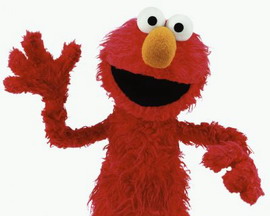I recently brought back an assortment of books, toys and supplies from the States for my daughter. Among them was a “Sing-along with Elmo” book that features a puppet of every toddler’s favorite furry monster and lyrics to the song “If You’re Happy and You Know It.”
At first, the sight of a bug-eyed little red monster wriggling around in a hole cut out of the middle of a book completely freaked Marianne out, but she eventually got over it and now giggles with glee whenever we whip out Elmo.
Like the ubiquitous Fuwa, which seem to induce a sort of ecstatic trance on virtually every child, Elmo’s designers were definitely onto something when it comes to toddler appeal – witness the stories of parents literally fighting it out for those Tickle Me Elmo dolls back in the 90s.
I raised this analogy to my Beijing-born wife last night as I tried explaining how Sesame Street, of which she’s only seen the occasional snippet, helped shape the minds of an entire generation of North American kids*. While she found my descriptions of the assorted characters – Kermit, Cookie Monster, Grover, the Count, Oscar (I even threw in a few Muppet Show characters, Ms Piggy and Animal) – amusing, it was one of those “you had to be there” situations; Sesame Street is simply one of those things to which mere words do no justice.
*Elmo, as some may recall, was a later addition to the cast (introduced some time in the 1980s) – a sort of “Grover-on-steroids” that marked the beginning of the Sesame Street Marketing Machine.




